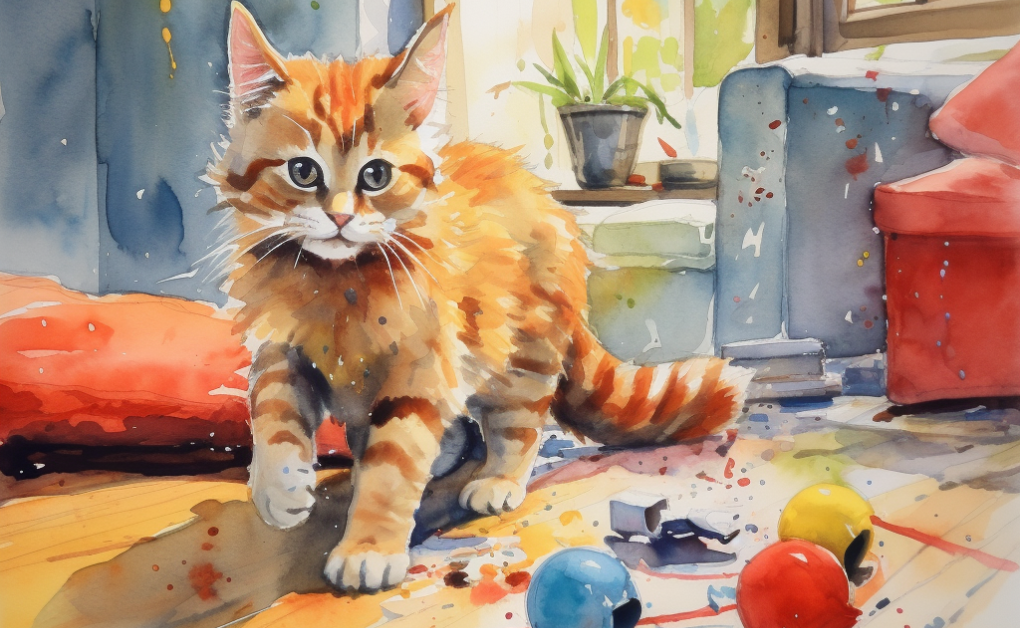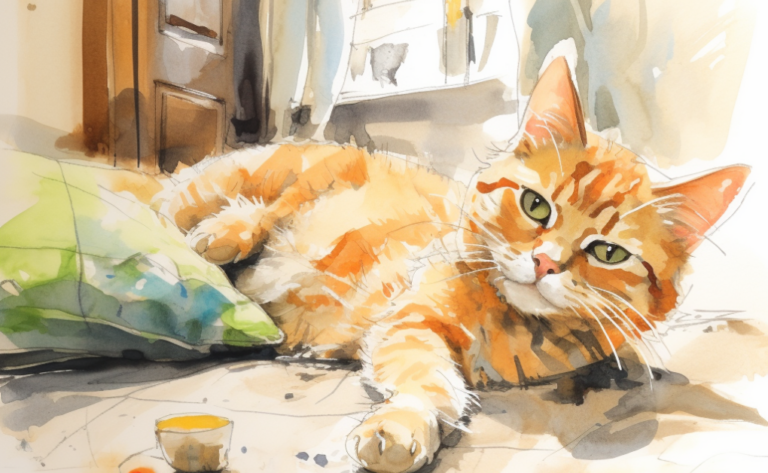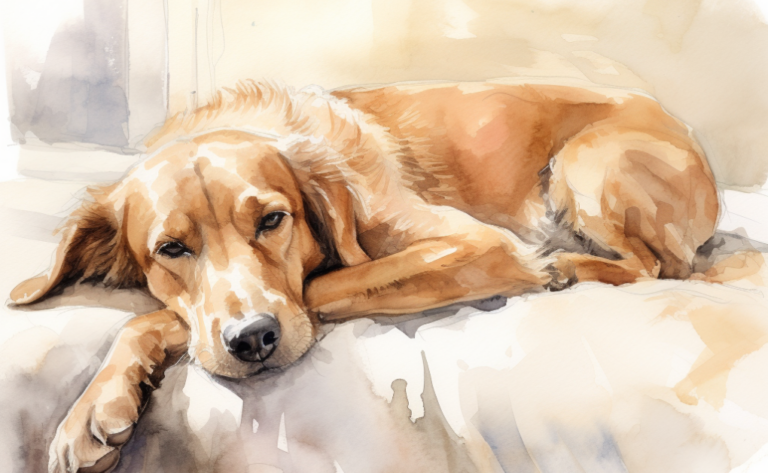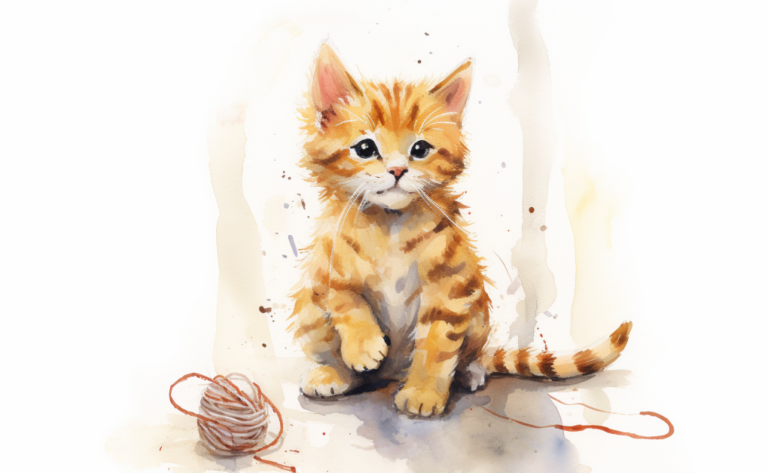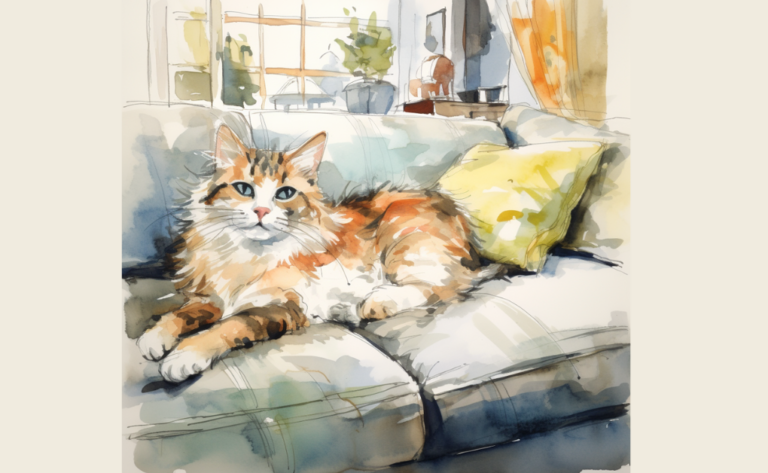What are Nasal Foreign Bodies in Cats?
What is it?
How is it Treated?
Breed Predispositions
Any cat can accidentally inhale or ingest a foreign object that can become lodged in their nasal passages.
Introduction
It was just an ordinary day when Sarah noticed her cat, Muffin, sneezing excessively and pawing at her nose. Concerned, Sarah scheduled an appointment with the veterinarian, suspecting it could be a simple cold. To her surprise, Muffin was diagnosed with nasal foreign bodies, something Sarah had never heard of before.
Nasal foreign bodies in cats indicate the presence of unexpected objects or substances that have unintentionally entered and become lodged in the nasal passages. These foreign objects can block the cat’s airway, causing discomfort or severe complications. This condition arises when items such as grass awns, small toys, plant material, or other miniature objects accidentally make their way into a cat’s nose and get trapped. In one particular study, it was observed that 81% of such foreign bodies were vegetable matter, 14% mineral matter, and 4.8% artificial material.
When a foreign body disrupts the nasal functions, symptoms like sneezing, nasal discharge, or difficulty breathing may manifest. This disruption may extend to the nasopharyngeal area, causing issues with the GI tract if the foreign body becomes lodged in the nasopharynx. Sometimes, a foreign body could even enter the bronchus or frontal sinus.
Recognizing the presence of a foreign body in a cat’s nasal passage is critical for securing prompt and appropriate veterinary care. The main action typically involves safely extricating the foreign body to alleviate the blockage and restore regular nasal functionality. Prompt intervention is key to averting potential complications and preserving the cat’s respiratory health.
How Do Cats Get Foreign Bodies Stuck in Their Nose?
Cats, naturally curious and explorative beings, often use their noses to probe their surroundings. This curiosity, while part of their charm, can sometimes cause them to sniff or inhale objects that become lodged in their nasal passages or turbinate, leading to a condition known as respiratory foreign bodies. Let’s take a look at some common scenarios that can lead to this:
- Play Time Mishaps: Cats fondly play with small objects, including toys, strings, beads, or insects. Occasionally, these items can be unintentionally inhaled or become stuck in their nasal passages, causing a foreign body obstruction.
- Outdoor Explorations: Cats free to roam outdoors come into contact with a wide array of potential foreign bodies like small sticks, grass, seeds, or other plant debris. During their exploratory sniffing, they might inadvertently inhale these objects.
- Eating or Drinking Accidents: Foreign bodies can sometimes be inhaled while the cat is eating or drinking, particularly if they are eating hastily or get startled mid-meal, leading to an esophageal foreign body situation.
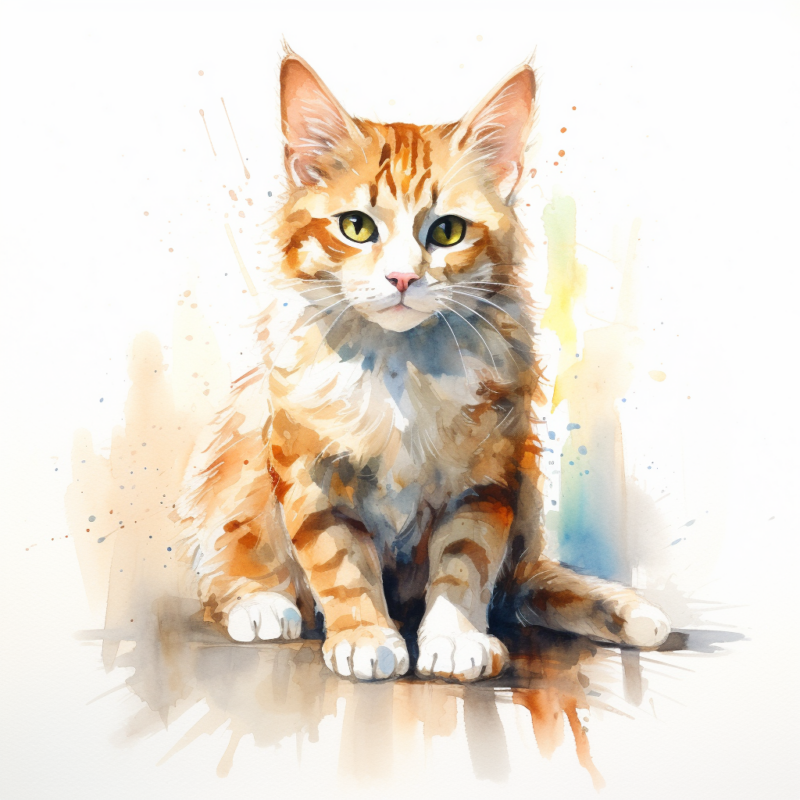
- Unintended Inhalation: Cats can accidentally inhale objects when startled or during a sudden intake of breath, such as during a sneeze or yawn. This accidental inhalation could result in an obstruction in the esophagus or even the trachea.
It’s essential to highlight that foreign bodies in the nasal passages can result in considerable discomfort and potential health risks, like a GI obstruction, for cats. These risks can manifest as symptoms including sneezing, nasal discharge, nosebleeds, pawing at the nose, and respiratory distress. Additionally, items like tinsel can become a source of nasal disease during the holiday season. If you suspect your cat has inhaled a foreign object, immediate veterinary attention is necessary.
Signs of Nasal Foreign Body in Cats
When a foreign body finds its way into a cat’s nose, it can lead to clinical signs that suggest your feline companion is experiencing discomfort and requires veterinary attention. Some of these symptoms could include:
- Persistent Sneezing: A cat might sneeze to dislodge the foreign material obstructing its nasal passage.
- Nasal Discharge: Often, cats with nasal discharge could indicate an obstruction in their nasal cavity.
- Pawing at the Nose or Face: Your cat might attempt to physically dislodge the foreign object by pawing at its nose or face.
- Nosebleeds (Epistaxis): A foreign object in the nasal cavity can cause nosebleeds, particularly in the right nasal cavity, which could be due to irritation or injury.
- Difficulty Breathing: The foreign body may obstruct the nasal passage, leading to noticeable breathing difficulty.
- Loss of Appetite: Discomfort from a nasal obstruction might reduce appetite.
- Changes in Behavior: Cats might show changes in behavior due to discomfort. This could involve avoiding play, appearing lethargic, or exhibiting signs of stress.
In some cases, the foreign body, like a blade of grass, maybe lodged further in the cat’s throat or even the middle ear, leading to gagging or other respiratory signs. If your cat displays any of these symptoms, especially persistent or severe, prompt consultation with a veterinarian is crucial. Successful removal of the foreign body often resolves clinical signs, restoring the cat’s comfort and health.
How Do Vets Diagnose Nasal Foreign Bodies in Cats?
Determining the presence of a foreign body lodged in a cat’s nasal passage requires an integrative approach, combining a detailed physical examination and diagnostic imaging. The main steps involved in this process are as follows:
Thorough Physical Examination
The diagnostic process starts with a meticulous physical examination. The veterinarian will closely inspect the cat’s nasal passages, oral cavity, and throat, searching for visible signs of a foreign object, inflammation, discharge, or bleeding. In this phase, the examination may also reveal any other disease affecting the cat, such as peritonitis.
Rhinoscopy Procedure
Should a nasal foreign body be suspected, a rhinoscopy often follows the initial examination. This procedure involves the insertion of a thin, flexible tube equipped with a camera (rhinoscope) via nasal or oral route into the cat’s nose. The rhinoscope allows for direct visualization of the nasal passages. It requires sedation or general anesthesia to ensure the cat’s comfort and minimize stress.
Radiographic Examination (X-rays)
In certain cases, the veterinarian might examine the cat’s skull. This helps visualize the nasal passages and sinuses. Even though not all foreign bodies (such as plant material or plastic) are detectable on an X-ray, this step is beneficial in ruling out other potential causes of the cat’s symptoms, like a tumor or sinus infection. This radiographic inspection might also be useful in identifying an intestinal obstruction if the foreign body was ingested and has lodged in the intestinal loops, causing a complete intestinal blockage.
Computed Tomography (CT) Scan
If the foreign body is not easily detectable via the methods above, a CT scan may be recommended. This advanced imaging technique offers a comprehensive, cross-sectional view of the cat’s nasal passages, aiding in precisely identifying the foreign body’s presence and location.
Nasal Flushing Technique
Occasionally, a nasal flush might be executed if the foreign body is small and loose. This procedure involves gently pushing saline through the nasal passages to dislodge and remove the foreign object. Much like the rhinoscopy, this procedure typically requires sedation or anesthesia.
Keep in mind that diagnosing can be complex. Thus, it’s crucial to seek professional veterinary advice if a nasal foreign body is suspected in a cat, whether neutered or not.
How Do Vets Treat Nasal Foreign Bodies in Cats?
Removing a foreign material lodged in a cat’s nasal passage can be a painstaking task that often necessitates sedation or anesthesia to curtail discomfort. Veterinarians commonly implement the following techniques:
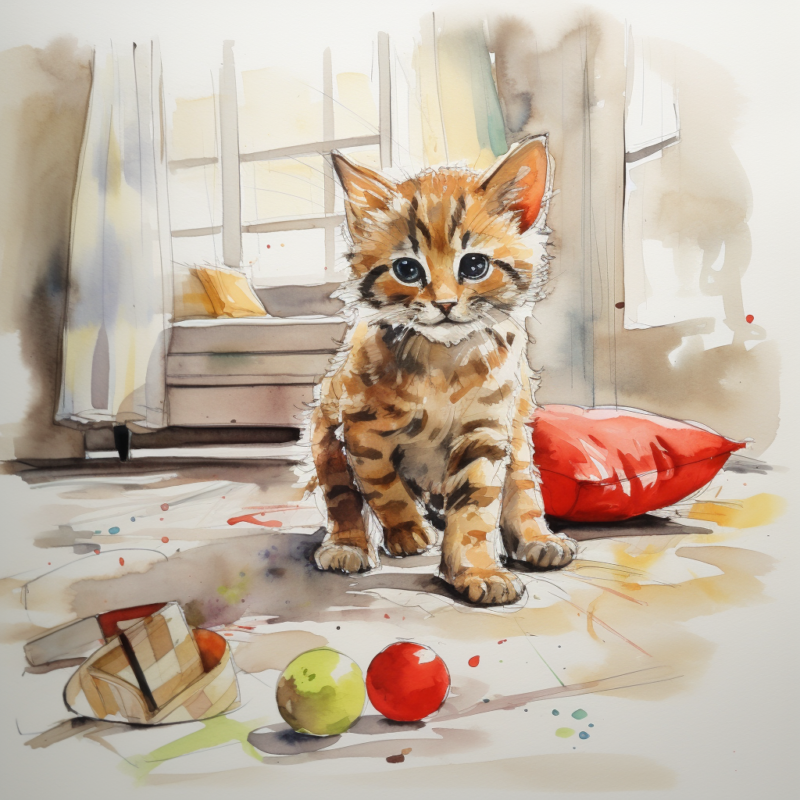
Manual Extraction
In instances where the foreign material is visible and readily accessible, the veterinary surgeon might perform a manual extraction using forceps or tweezers. Sedation or general anesthesia is usually employed to ensure the cat’s calmness and stability during the procedure.
Rhinoscopy Usage
Rhinoscopy is often the method of choice when the foreign body is positioned further up in the nasal passage and not visible externally. This procedure, often carried out during exploratory surgery, requires the cat to be sedated.
This enables the veterinarian to visualize the interior of the nasal passage on a screen and gently extract the foreign body using specialized tools.
Nasal Lavage
In certain scenarios, a nasal lavage or nasal flush can be conducted. This technique involves injecting a saline solution into the cat’s nasal passage to dislodge and rinse the foreign material. Like the other methods, this procedure typically necessitates sedation or anesthesia.
Surgical Intervention
Surgical intervention might be required if the foreign body is deeply embedded or unresponsive to the above techniques. This could involve an incision into the nasal passage or sinuses to access and perform the surgical removal of the foreign body. The surgical procedure may extend to intestinal resection if the foreign body has caused an intestinal blockage. This approach is typically viewed as a last resort due to its invasive nature and higher risk of complications.
After successfully removing the foreign object, the vet may administer intravenous (IV) fluids and prescribe antibiotics to thwart any potential secondary infection or anti-inflammatory drugs to mitigate swelling. If polyps are discovered, these can be removed with due caution. The cat will also need close monitoring in the days following the procedure to ensure there are no complications and that it is recuperating well.
How to Prevent Nasal Foreign Bodies in Felines?
Preventing nasal foreign bodies in cats primarily involves managing their environment to reduce the chances of them inhaling or sniffing up small objects. Here are some prevention tips:
- Keep Small Objects Out of Reach: Small items such as toys, beads, strings, and craft materials can pose a risk if your cat inhales or swallows them. Keep these items stored safely away when not in use.
- Supervise Playtime: If your cat likes to play with small toys, make sure you are present to supervise and ensure they don’t accidentally inhale or swallow anything.
- Safe Outdoor Environment: If your cat has access to the outdoors, ensure the environment is safe. Remove any small, loose objects that your cat could potentially inhale.
- Regular Dental Care: Poor oral health can sometimes contribute to respiratory issues if dental disease leads to infection or inflammation in the nasal passages. Regular dental care can help prevent this.
- Adequate Hydration: Keeping your cat well-hydrated can help keep their mucus membranes moist and more capable of trapping and removing potential foreign bodies before they can get lodged in the nose.
- Slow Down Eating: If your cat tends to eat quickly or gulp their food, it may be more likely to inhale foreign objects. Feeding smaller, more frequent meals and using puzzle feeders or slow-feed bowls can help slow their eating.
Remember, accidents can still happen, and no prevention method is foolproof. If your cat shows signs of a foreign body, such as frequent sneezing, nasal discharge, or pawing at their nose, it’s important to seek veterinary care promptly.
Frequently Asked Questions
Disclaimer: The information provided on this veterinary website is intended for general educational purposes only and should not be considered as a substitute for professional veterinary advice, diagnosis, or treatment. Always consult a licensed veterinarian for any concerns or questions regarding the health and well-being of your pet. This website does not claim to cover every possible situation or provide exhaustive knowledge on the subjects presented. The owners and contributors of this website are not responsible for any harm or loss that may result from the use or misuse of the information provided herein.

